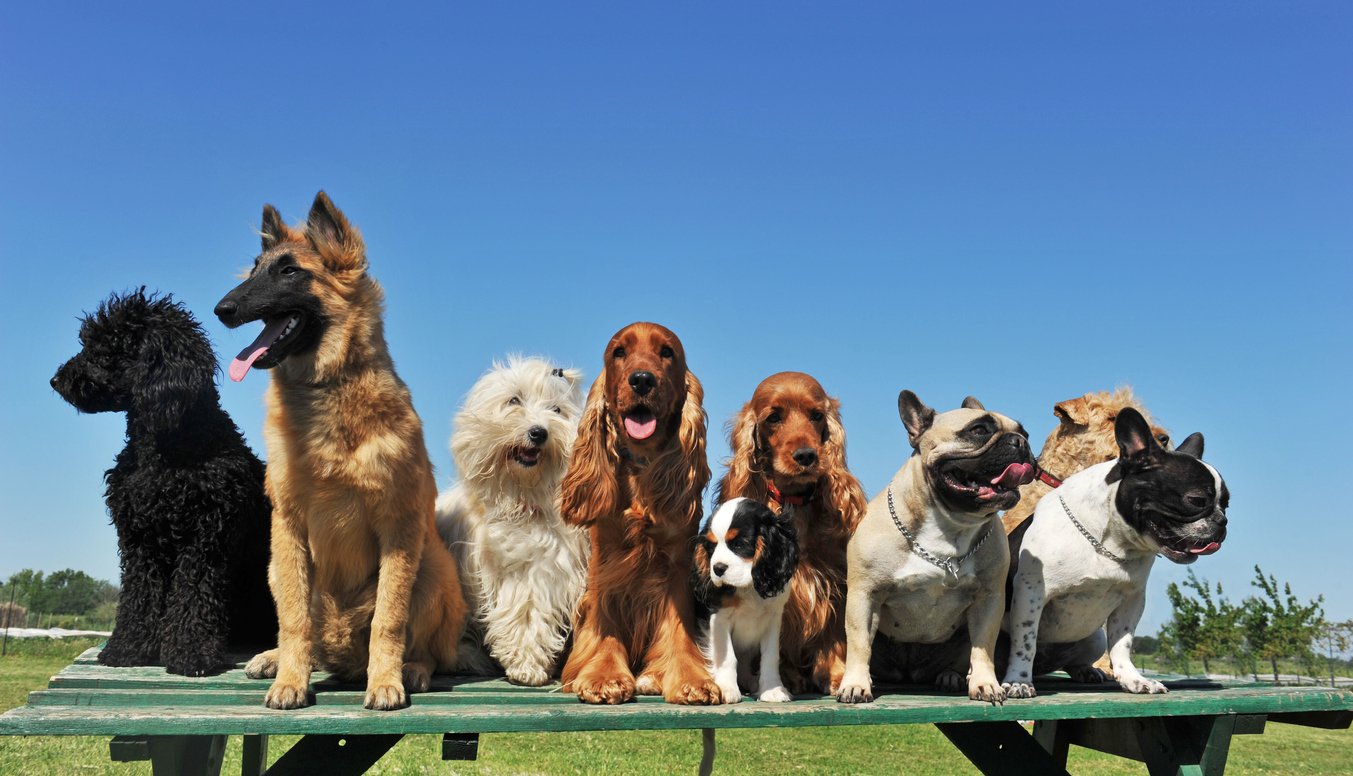Halloween is a time for fun, costumes and candy, but it can also bring unexpected dangers for our furry family members. Whether you’re in the United States, the United Kingdom, Ireland, Canada, or elsewhere around the world, pet parents and caregivers should take extra precautions to keep dogs and cats safe during this festive season.
These Halloween pet safety tips will help you ensure your four-legged companions enjoy a safe, stress-free celebration.
Keep Candy and Chocolate Out of Reach
While trick-or-treat sweets are a delight for humans, they can be harmful to pets.
-
Chocolate contains theobromine and caffeine, which are toxic to dogs and cats. Even small amounts can cause vomiting, diarrhea or more serious heart issues.
-
Sugar-free candies and gum often contain xylitol, which can cause dangerous insulin spikes and liver failure in dogs.
-
Raisins (often found in “healthier” snack packs) can lead to kidney damage in pets.
Keep all candy bowls and treat bags in sealed containers or on high shelves. Remind guests and children not to share their treats with pets. You can still treat your pets and involve them in festivities safely! Try our DIY pet-safe Halloween treat recommendations.
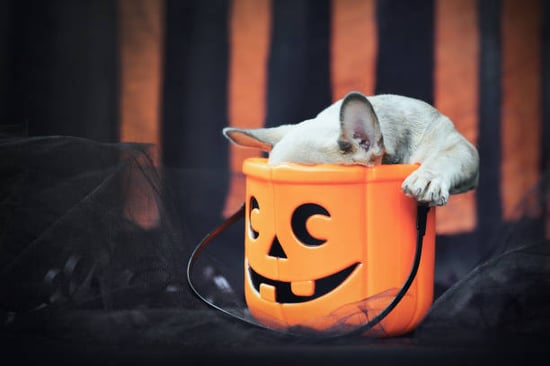
Choose Comfortable Costumes — or Skip Them Altogether
Pet costumes can be adorable, but not every animal enjoys dressing up. Before you put your dog or cat in costume:
-
Make sure it doesn’t restrict movement, breathing or vision.
-
Avoid small pieces or accessories that could be chewed or swallowed.
-
Watch for signs of stress such as panting, flattened ears or trying to remove the outfit.
The American Society for the Prevention of Cruelty to Animals (ASPCA) cautions: “We recommend not putting your dog or cat in a costume unless you know he or she loves it."
If your pet seems uncomfortable, consider a festive bandana or collar instead. The adorable photo will still happen, and your pet will be much happier!
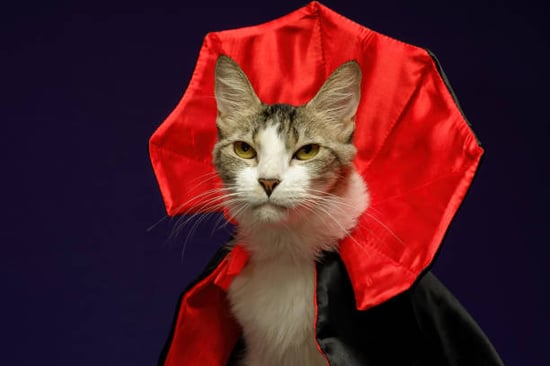
Be Careful with Decorations
Halloween décor gets us in the spooky spirit, but some items can be risky for pets. Be cautious of the following when decorating your home or pet-care facility:
-
Candles and pumpkins can be fire hazards, especially with curious cats nearby. Opt for LED candles or battery-operated lights.
-
Electrical cords and string lights should be kept out of reach to prevent chewing, choking, shock or burns.
-
Fake cobwebs, plastic décor, small accessories can cause choking or intestinal blockage if swallowed.
In Australia, the Royal Society for the Prevention of Cruelty to Animals (RSPCA NSW) explains what to do if your curious critter meets dangerous decor:
“If you do suspect your pet might have eaten something they shouldn’t have, it’s best to contact your local vet as soon as possible," Veterinarian Dr Liz Arnott said.
Don't leave it to chance. Keep decorations out of your pet’s reach and unplug houses or displays when not in use.
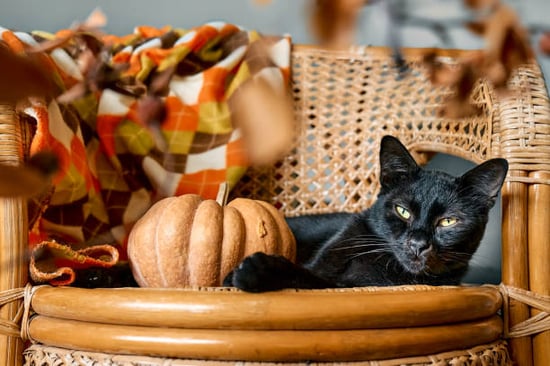
Protect Black Cats and Outdoor Pets
Unfortunately, black cats are sometimes targeted due to outdated superstition. To keep them safe, keep all cats (and any outdoor pets) indoors or supervised in the days leading up to and on Halloween night.
Some shelters limit adoptions of black cats in October as a precaution, reminding us that pet safety always comes first.
Take Trick-or-Treating Precautions
If you plan to hand out candy or join trick-or-treat festivities:
-
Secure your pet: The constant door-bells, costumes and visitors can frighten them, leading them to bolt.
-
Use a quiet room or crate with soft music or toys to keep them calm.
-
Make sure ID tags and microchips are up to date, as this is a high-risk time for escapes.
The AVMA states: “Pets should be properly identified (microchip, collar, and ID tag) in case they escape through an open door while owners are distracted with trick-or-treaters."
If your pet enjoys social activity and you choose to take them outside, use a reflective harness or leash, keep them close, and avoid loud crowds or roads.
Seasonal Pet Safety Around the World
Pet safety around this time of year extends beyond Halloween in the U.S. Here are some global reminders:
-
United Kingdom & Ireland: Fireworks and Bonfire Night celebrations often follow Halloween. Loud noises, fireworks, and lights can stress pets. Create a calm indoor space and consider soothing aids.
-
Canada & Northern Europe: As temperatures drop, ensure pets have warm shelter and check paws for ice, salt or antifreeze exposure.
-
Australia & New Zealand: Seasonal celebrations may include gatherings, sweets, chocolate and alcohol. Keep these safely away from curious pets.
The key is awareness. Seasonal hazards may vary, but preparation and attentiveness will keep pets safe no matter where you live.
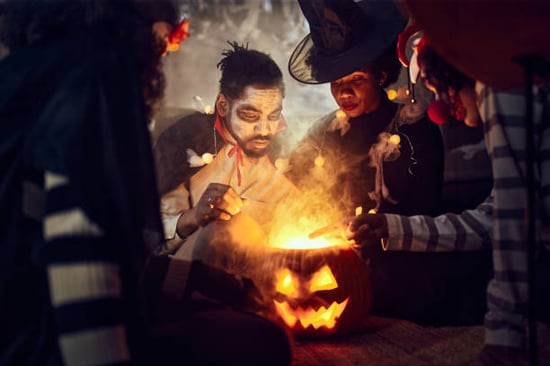
When in Doubt, Call Your Vet
If your dog or cat eats something potentially toxic or behaves unusually, contact your veterinarian or local emergency animal clinic right away. For example, the ASPCA’s Animal Poison Control recommends immediate action if you suspect ingestion of a harmful substance.
Pro tip: Utilize software like Revelation Pets to store veterinary information for each pet in your care. Pet parents can add or change these details in their customer portals so you always have the most up-to-date details.
Quick action makes all the difference in pet care.

Make Halloween Fun & Safe For Everyone
Halloween should be full of treats, not trips to the vet. With just a little preparation, you can enjoy the festivities while keeping your pets calm, comfortable and safe. From jack-o-lanterns in the U.S. to autumn fireworks in the U.K., these Halloween pet safety tips ensure everyone (two- and four-legged alike) has a fun and safe holiday.
Looking for tools to organize and optimize your pet-care operations? Try Revelation Pets free for 14 days!





